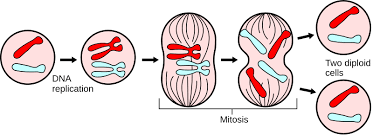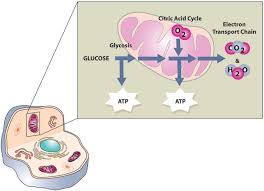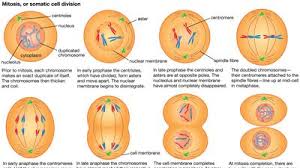Cell is the basic unit of life. Cells are the smallest structures capable of basic life processes, such as taking in nutrients, expelling waste, and reproducing. All living things are composed of cells.
Some microscopic organisms, such as bacteria and protozoa, are unicellular, meaning they consist of a single cell. Plants, animals, and fungi are multicellular; that is, they are composed of a great many cells working in concert.
But whether it makes up an entire bacterium or is just one of trillions in a human being, the cell is a marvel of design and efficiency. Cells carry out thousands of biochemical reactions each minute and reproduce new cells that perpetuate life.
Cells are made up of different chemical components, performing different functions within the cell.
Read Also: How to Grow Paw-Paw (papayas): Beginners Business Guide
Major Chemical Components of Agricultural Cells

The major chemical constituents of the cell are water, protein, carbohydrates, lipids and inorganic salts.
1. Water and Its Significance in the Cell
Water is the largest constituent of the cell (about 85 percent). The protoplasm is largely a colloidal solution in water. Water also acts as a solvent for inorganic substances and enters into many reactions that occur in the cell.
Water occurs in the cell as free water, and is available for use in metabolism and as bound water, which is absorbed to the surface of protein and other molecules.
2. Proteins and Their Functions in Cell Metabolism
After water, protein is the next largest constituent of the protoplasm (about 10 percent). Proteins and related substances are involved in many activities of the protoplasm and the cell.
The large size of many protein molecules (the molecular weight varies from 10³ – 10⁶) makes them an important factor in maintaining osmotic pressure in cells, so that the water level in the cell remains relatively constant.
All enzymes which catalyse chemical reactions in cells are proteins. All cell membranes are partly protein and proteins are associated with the genes involved in the transmission of genetic information from cell to cell and generation to generation.
When proteins are digested with acids, alkalis or enzymes, they break up into small pieces and upon complete hydrolysis give rise to amino acids. Many proteins combine with other molecules to form the cellular components.
Nucleoproteins, for example, are products of nuclei acid, while lipoproteins are products of lipids and protein.
Read Also: How To Grow Apple Trees
3. Carbohydrates in Cell Structure and Energy Supply

Carbohydrates are found in the cell and may occur in soluble or insoluble form and as reserve food or as integral part of protoplasm or cell wall. Sugars, starch, resins, etc. are examples of carbohydrate.
Carbohydrates can be broadly classified into sugars and polysaccharides. Polysaccharides are formed due to condensation of large number of sugar molecules.
Cellulose is a regular polymer of glucose. Starch is complex polysaccharide and is mixed or irregular polymers of sugars.
Carbohydrates in the cell have a high turnover and utilization as energy. Carbohydrates are also essential components of the DNA and RNA. (DNA = deoxyribose nucleic acid and RNA = ribonucleic acid).
The sugar, deoxyribose in combination with a base (purine or pyrimidine) and a phosphate, form DNA – which is the carrier of all genetic information, while ribose combines with a base and a phosphate to form RNA, which is associated with all proteins. See fig. 2 in article 2, for the basic structures of purine and pyrimidine bases.
4. Lipids and Their Role in Membrane Formation
Lipids are important in forming part of the plasma membrane and other membraneous substances. Lipids are either esters of fatty acids or hydrolytic products of such esters. Fats are the most important lipids. Fats are esters of glycerol and fatty acids. Lipids are insoluble in water but soluble in organic solvents like alcohol, ether, chloroform, etc.
Hence, they easily aggregate in the aqueous environment of the cell and thus, form a bimolecular layer which is a major component of various membranes.
Lipids are also utilised in the cells for the release of energy. Lipids can also be found in combination with other substances such as phosphate (phospho-lipids) or nitrogenous base (as in lecithin).
5. Inorganic Salts and Their Importance in Agricultural Cells
The organic components of the cell account for 99 percent of the cell weight, while the inorganic components are about 1 percent of the dry weight of the cell. The inorganic salts found in the cell include, sodium, potassium, magnesium, calcium, phosphorus, iodine, copper, zinc, cobalt, selenium, chlorine, fluorine, molybdenum, silicon, and vanadium.
Inorganic salts and their ions aid in maintaining a constant pH and help to regulate osmotic pressure in the cell. Phosphorus joined with adenosine to form ADP or ATP is vital for energy release in the cells.
The components of cells are molecules, nonliving structures formed by the union of atoms. Small molecules serve as building blocks for larger molecules. Proteins, nucleic acids, carbohydrates, and lipids, which include fats and oils, are the four major molecules that underlie cell structure and also participate in cell functions.
For example, a tightly organised arrangement of lipids, proteins, and protein-sugar compounds forms the plasma membrane, or outer boundary, of certain cells. The organelles, membrane-bound compartments in cells, are built largely from proteins.
Biochemical reactions in cells are guided by enzymes, specialised proteins that speed up chemical reactions. The nucleic acid deoxyribonucleic acid (DNA) contains the hereditary information for cells, and another nucleic acid, ribonucleic acid (RNA), works with DNA to build the thousands of proteins the cell needs.
The major chemical constituents of the cell are water, proteins, carbohydrates, lipids and inorganic salts. Each cell is a model of independence and self-containment. Like some miniature, walled city in perpetual rush hour, the cell constantly bustles with traffic, shuttling essential molecules from place to place to carry out the business of living.
Despite their individuality, however, cells also display a remarkable ability to join, communicate, and coordinate with other cells. The human body, for example, consists of an estimated 20 to 30 trillion cells.
Dozens of different kinds of cells are organised into specialised groups called tissues. Tendons and bones, for example, are composed of connective tissue, whereas skin and mucous membranes are built from epithelial tissue.
Different tissue types are assembled into organs, which are structures specialised to perform particular functions. Examples of organs include the heart, stomach, and brain. Organs, in turn, are organised into systems such as the circulatory, digestive, or nervous systems. All together, these assembled organ systems form the human body.
Do you have any questions, suggestions, or contributions? If so, please feel free to use the comment box below to share your thoughts. We also encourage you to kindly share this information with others who might benefit from it. Since we can’t reach everyone at once, we truly appreciate your help in spreading the word. Thank you so much for your support and for sharing!

